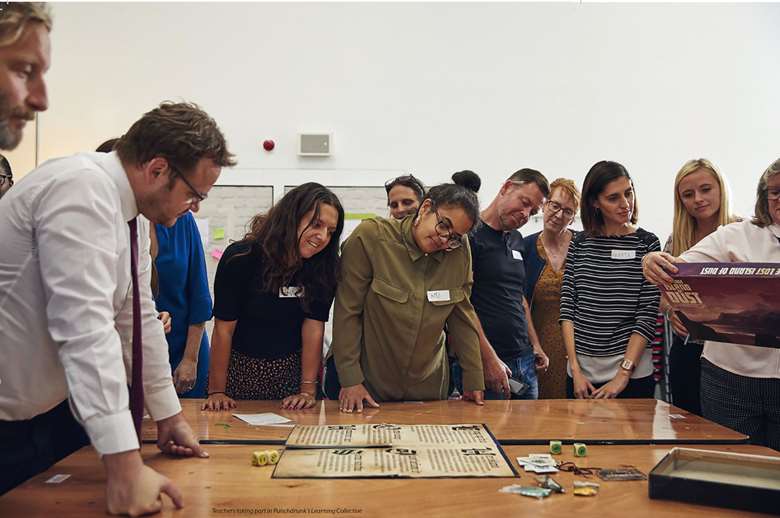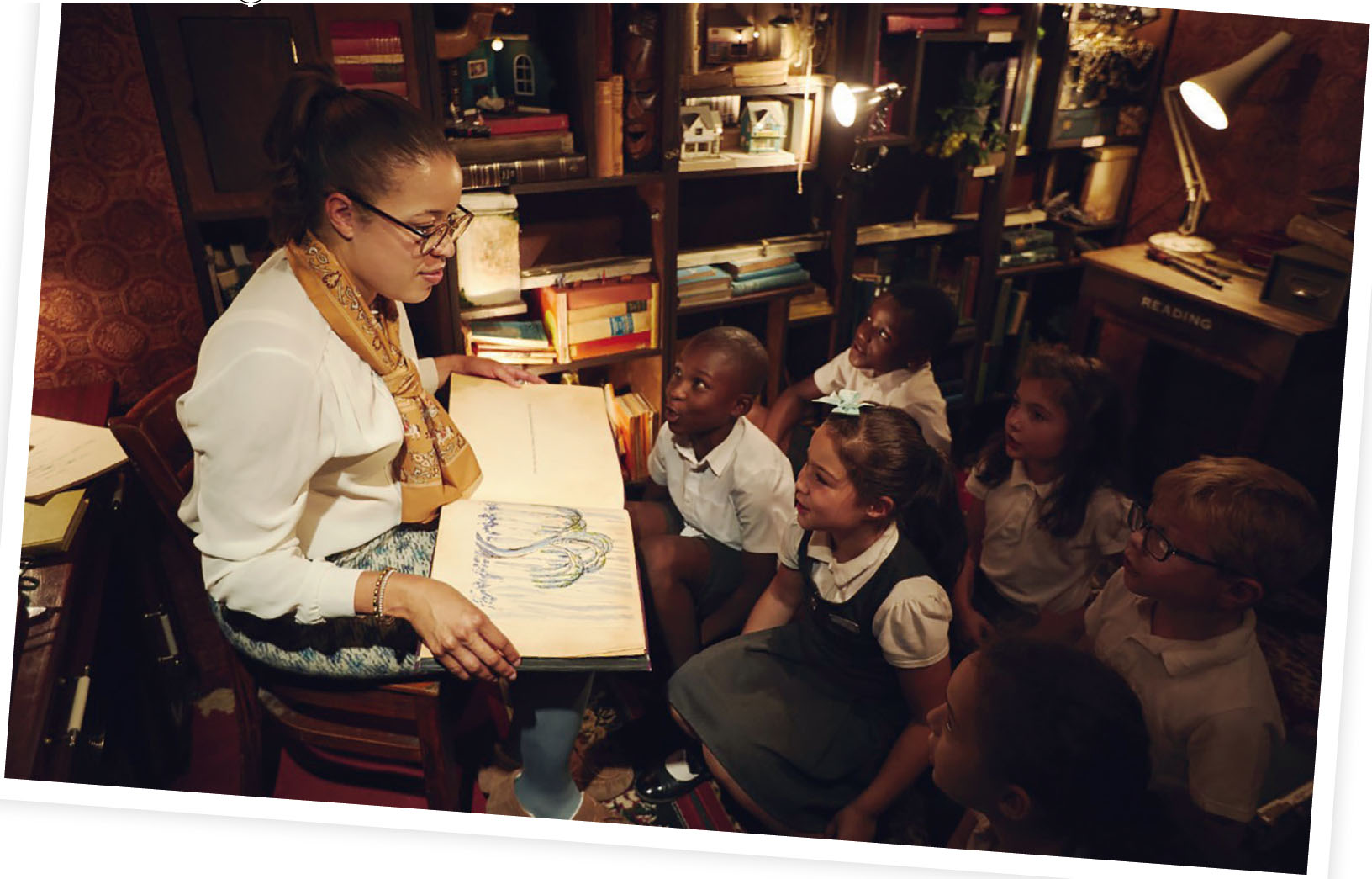Come Play
Rebecca Pizzey
Sunday, March 1, 2020
Rebecca Pizzey learns about Punchdrunk's new Learning Collective, the joys of immersive teaching, and why adults could learn a thing or two from children about play

PAUL COCHRANE
A giant game of hide and seek,’ Pete Higgin tells me, has the teachers ‘exploring their school as a child, with a childlike sense of discovery.’ On an INSET day, when all of the students are on holiday, teachers are encouraged to experience the old stomping ground through a new lens. Where did this mark on the wall come from? What is hidden within that unusual cupboard at the end of the hall? Suddenly, an established – and probably boring – place becomes the backdrop for an abundance of possible stories and worlds and experiences. And this sense of play, this desire for and feeling of curiosity, is imperative to Punchdrunk's ethos.
Founded in 2000 by Felix Barrett, Punchdrunk centres on the skills attributed to childhood that we as adults have likely lost by the time we've entered the world of work. Punchdrunk is famous for transforming schools into unrecognisable realms – see the Lost Lending Library – but it has also been working on an essential project which will offer teachers the confidence and creativity to sow those seeds of curiosity and play into their everyday teaching: the Learning Collective.
Immersive teaching
As the director of Punchdrunk Enrichment – formed in 2008 to focus on outreach to communities and schools – Higgin oversees the Learning Collective, which, according to Punchdrunk's website, will see ‘teachers and schools [being] taken on a journey with the ambition to equip them to become experts in immersive learning techniques and approaches’.
‘We're not trying to turn teachers into immersive theatre makers,’ Higgin says, acknowledging that, in its current pilot stage, teachers often come to the workshops with Punchdrunk facilitators tired after a full day at work. But, he adds, ‘What we've seen over the years is that they really hunger for this type of project. And while they get hooked on the approach we use for the Lost Lending Library, what we're really trying to do is explore with teachers how they can take the fundamental principles of our practice and embody them in their everyday teaching in a sustainable way.’

© PAUL COCHRANE
Students in Punchdrunk's the Lost Lending Library
Punchdrunk has previously worked closely with senior Roehampton University lecturer Angela Colvert, whose research has seen the development of the Model of Immersive Play, designed to encourage and inspire cognitive, physical and emotional responses to theatre. This is the core of the Learning Collective: enveloping creators in the metaphysical – in ways that are small but significant.
Since it's in its pilot phase, the structure of the Collective is, for now, quite light. Higgin tells me that the facilitators are working closely with the teachers to review the process continually. In the first of its three years, the Collective currently serves as scaffolding and guidance through processes such as immersive play; in the second year, the teachers will co-create a piece of work with the facilitators, and in the third, the scaffolding will be removed to prepare the teachers for independent creation.
The Learning Collective aims to inspire teachers to practise immersive teaching by taking the extraordinary, the magical, and applying it to ordinary life – to give a normal day in the classroom that sense of wonder that ultimately inspires a child's imagination. ‘This could be about changing up the routine in school, or it could be about finding something strange,’ Higgin says. ‘It's about where you position the students in relation to the curriculum and how you present that curriculum; as such, we try to operate on a problem-work-reward sequence. There's a narrative, however light it may be, and that poses a problem that the pupil must solve by doing work, and in doing that, they're rewarded in some way. So it's about positioning the curriculum as something that the children feel they need to do, because it will solve something.’
Learning though play
Certainly, when children or older students are motivated, they produce better work – but how can a teacher align the importance of following something as mundane (to the pupil) as the curriculum with their motivation to engage and, along the way, succeed?
‘This year we're looking at ritual and encouraging teachers to embed very small theatrical rituals into their everyday teaching. We're doing an INSET piece around a furrow stone, which is just any old stone that we imbue with a magical property, and we encourage teachers to create a ritual around this stone. Where has the stone come from? Who could have owned it? What is its magic? This is always linking back to a challenge within the school – whether it's about boys’ reading, or resilience, or independent learning – and we look at how we can frame this ritual around addressing that challenge in some way.’
This also applies to the big game of hide and seek that Punchdrunk has the teachers doing on INSET days. Exploring a familiar space with a childlike sense of discovery and wonder allows them to notice what they've never noticed before. ‘How can you build myths by re-lensing and reinterpreting a space that already exists?’ Higgin asks. These are practical changes that are less about bells and whistles and more about longevity and sustainability.
‘It's about structuring motivation and creating an imaginative world which children believe,’ Higgin says. ‘And even if they question whether it's real or not, we want them to really invest in the ruse of this imaginary space. Once you get them tapped into this possibility, you can latch them onto helping a character, can have them believing that this magic stone will make that character better or improve another element of the story.
‘And from that flows everything else. We can't say that because of our work, grades jump up – but we can say that our work and practice makes teachers and pupils more engaged, more focused, and from that, you're creating the conditions for pupils to better achieve. It's essentially positioning the child as the protagonist of a story that unfolds around them; it's making them the most important person.’

